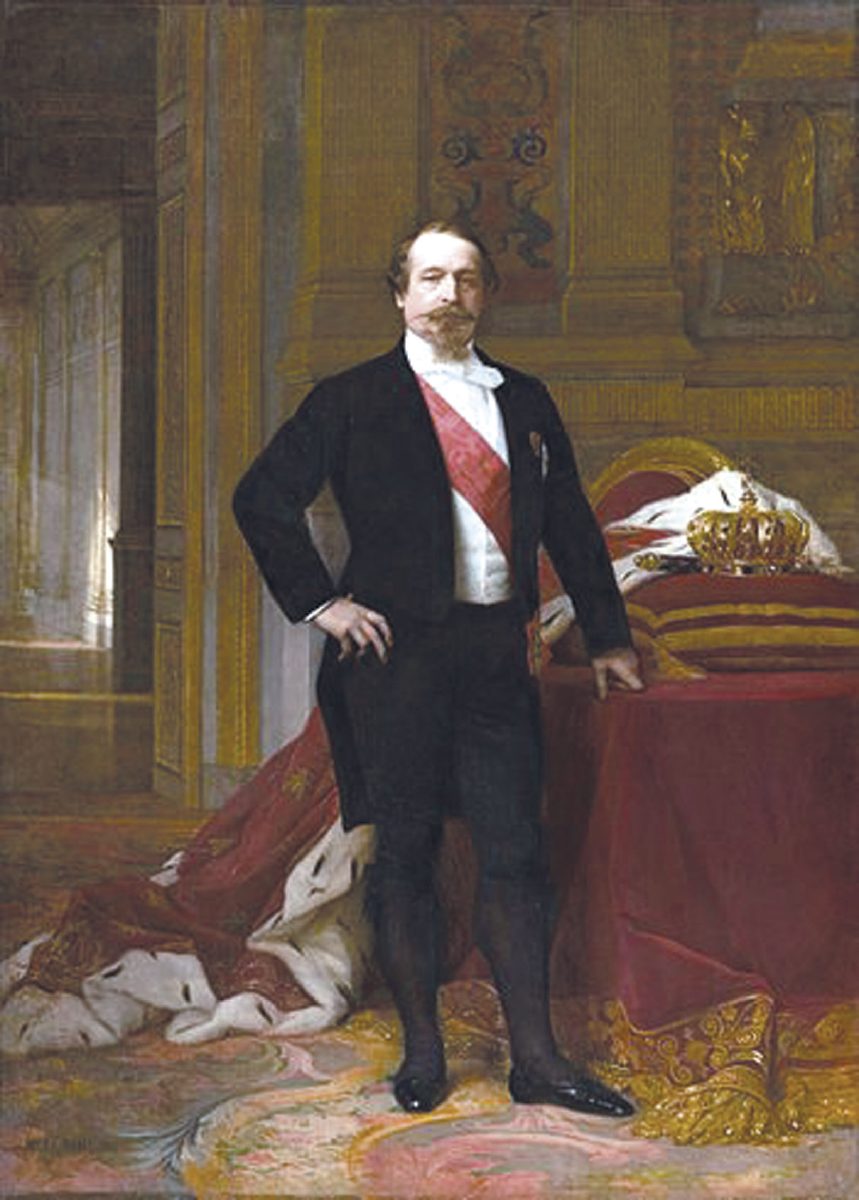BY NORMAN ROZEFF
Who in the world is Napoleon III and what does he have to do with South Texas history? He is relatively unknown in the annals of Texas history, but, if his plans had succeeded, Texas might not have evolved to what it is today.
Born 20 April 1808, Charles-Louis Napoléon Bonaparte was the nephew of the famed general and emperor. He was elected by popular vote as president of the Second French Republic in 1848. Three years later he organized a coup d’etat and took the throne as Napoleon III.
His history as ruler is too long and complicated to relate here, suffice to say it was with its triumphs and defeats akin to a wild roller coaster ride. While credited with the grand reconstruction of Paris, promotion of the building of the Suez Canal,and increasing the education opportunities of women, his foreign policy escapades were erratic and finally ended with an invasion of France and a major loss of French territory to the Prussian military in the Franco-Prussian War of 1870.
Napoleon was captured in the Battle of Sedan, went into exile in England, and died there 9 January 1873.
His involvement with North America is rather complicated. To start with, the democratic government of Benito Juarez faced a major problem in maintaining Mexican credit abroad. The fact was that the government was not even receiving enough revenue to maintain its administration, let alone pay foreign debt. In July 1861 Juarez then declared a two-year moratorium on all foreign debts. This declaration had an immediate impact on Great Britain, France, and Spain.
The latter two met and decided to send a fleet and expeditionary force to Veracruz to force Juarez’s hand. Spain, in fact, had never relinquished sovereignty over Mexico. Its small army in Cuba stood ready to act unilaterally if necessary. France was even a greater threat, for it gave Napoleon a long-sought opportunity.
The reasons for Napoleon’s intrusion into Mexico’s affairs are not recorded, and he himself never documented any. He had positioned France to lead the other pro-Confederacy European powers. Some historians have also suggested that he was driven by a desire to keep the American states divided. “Through 1862, Napoleon III entertained Confederate diplomats, raising hopes that he would unilaterally recognize the Confederacy. The Emperor, however, could do little without the support of the United Kingdom, and never officially recognized the Confederacy.”
The Confederate States of America’s early embargo on cotton exports was an attempt to force recognition on European cotton consumers. This too might have played a role in Napoleon’s thinking on Mexico.
The United States was involved in its Civil War, so its enforcement and contravention of the Monroe Doctrine expressly admonishing any European powers from interfering with New World politics was put on the back burner. “Napoleon, using as a pretext the Mexican Republic’s refusal to pay its foreign debts, planned to establish a French sphere of influence in North America by creating a French-backed monarchy in Mexico, a project that was supported by Mexican conservatives who grew weary of the anti-clerical tendencies of the Mexican republic.”
He even went so far as to negotiate with the president of Ecuador about a projected “Kingdom of the Andes.”
Representatives of the European powers met in London in December 1861. When Great Britain and Spain learned of France’s intention to effect a monarchical restoration, they became leery of Napoleon’s intentions. The three-power fleets arrived off Veracruz in December 1862 and put a force ashore in January 1862. Spain had the largest number of soldiers, 6,000 under General Juan Prim. At first France had but a brigade under an admiral but soon announced reinforcement of 4,000 regulars under General Comte Charles Ferdinand Latrille de Lorencez.
The British provided 700 Royal Marines but with no supporting shore services. While a proclamation declared that the forces had come “only to collect just claims” it also contained the interesting phrase that the expeditionary force would “preside at the grand spectacle of your regeneration”. As historian T. R. Fehrenbach comments “The British expected regeneration, probably through an honest paying up; the French had something else in mind.”
Prim, who was a closet liberal and had little loyalty to the Bourbon King of Spain, negotiated a con- vention under which he pledged not to move against Mexican sovereignty.
On April 9, 1862, the allies fell out completely. The British along with Spanish voiced caution. The French now went it alone and openly broke two conventions in order to conquer Mexico as was Napoleon III intentions from the first.
It was at Puebla that the arrogant General Lorencez was overconfident and threw caution to the winds. Ignacio Zaragosa, the Texas born liberal, held the passages to Puebla with his ragtag force. Three times the French assailed Fort Guadalupe, only to be turned back. A driving rain storm concluded the action. The French army of 8,000 were defeated by the Mexican army of 4,000 on May 5, 1862. 462 French soldiers died in combat. Only 83 Mexican soldiers died in the battle.
This, of course, was a morale booster for Mexican forces, for this victory delayed the French conquest by a full year. Napoleon was not deterred. He was to order a full army corps to Mexico, this under the command of the more com petent general, Elie Forey.
The individual that Napoleon enticed to become emperor was Archduke Ferdinand Maximilian of Austria. Maximilian was the younger brother of the Hapsburg Emperor Franz Joseph of Austria. Maximilian was married to young Charlotte, daughter of King Leopold of the Belgians. One of the conditions that Maximilian effected before accepting the role of emperor was a promise from Napoleon III that he would receive military support for three years. He and his wife did not arrive in Mexico on a warship until April 14, 1864. They took the names Maximiliano and Carlota to better assuage Mexican sensibilities.
Blue Guides, a travel site, summarizes Maximilian’s character and background in a single paragraph:
“The Archduke Ferdinand Maximilian Joseph, born at Schönbrunn in 1832, was good-hearted and idealistic. After a career as Commander-in-Chief of the Austrian navy, he was given the title of Governor General of Lombardy, part of a strategy of Franz Joseph’s to make Austrian rule more popular in northern Italy. It didn’t work. Nationalist fever was running high and despite the fact that Maximilian was a just and benevolent overlord, Lombardy didn’t want him. Instead they looked to Napoleon III of France to liberate them. Austria went to war with France and lost Lombardy at the Battle of Solferino in 1859. Maximilian retreated to his castle on the bay of Trieste, and there he remained, until in 1863 he elected to accept an offer that had been made to him by a clerical minority faction in Mexico: to become their emperor. Maximilian was encouraged in this by Napoleon III. Franz Joseph was greatly troubled. He knew that this was pure political gerrymandering by France, whose ambitions in the New World were considerable. But Maximilian wanted to go. He was ambitious and he also had grand ideas, ideas that were very different from those of his reactionary brother. While Franz Joseph’s main concern was to preserve the status quo, Maximilian, equally fatally, wanted to ‘make a difference’.”






